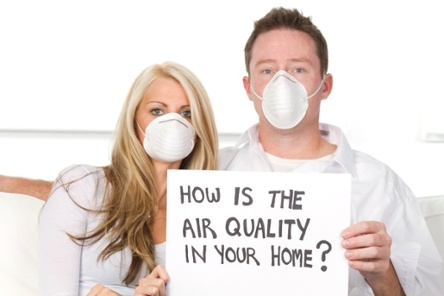
3 Nasty Air Contaminants and HOW to Improve Your Home’s Indoor Air Quality
3/6/2018
Is your home’s air making you sick? Is contaminated home air triggering coughs, wheezing, asthmas, and sinus problems in your family? Many families suffering from asthma, allergy symptoms, chemical sensitivity, fatigue, sinus issues, and chronic health ailments wonder if indoor air pollution is causing or exacerbating symptoms.
Although tobacco smoke is widely known to cause respiratory issues, other harmful pollutants may go unnoticed. Sadly, indoor air quality is often closely linked to a variety of health ailments and any homes have contaminants that can cause chronic health issues in families.
Here are some of the most common home air contaminants and how to dramatically improve indoor air quality.
Combustion Pollutants
This group of common pollutants includes carbon monoxide, nitrogen dioxide, and fine and ultrafine particles. Combustion pollutants are introduced to the home through fireplaces, unvented gas space heaters, and gas stoves Some combustion contaminants can cause throat irritation, lung disease, and respiratory infection, according to the California Air Resources Board.
Volatile Organic Compounds (VOCs)
These gases are emitted into the air from paint, adhesives, flooring, engineered wood products, cleaners, and furniture. Benzene and formaldehyde are two common VOCs that are known human carcinogens.
Formaldehyde is a colorless gas is found in many building and household products including adhesives and engineered wood products. Exposure to high levels is associated with coughs, chronic bronchitis, and asthma.
Benzene can enter the home through paint supplies, tobacco, and auto exhaust from attached garages. Long-term exposure can damage the immune system and cause a reduction in red blood cell counts, causing anemia.
Biological Contaminants
Dust, pollen, pet dander, mold, mildew, and rodent droppings can all erode indoor air quality and are linked to coughing, sneezing, dizziness, and some types of asthma. Keeping home relative humidity levels between 30 and 50 percent and preventing standing water help keep mold, mildew, and bacteria growth and dust mite populations at bay.
Clean Air Solutions
To boost indoor air quality, it is important to minimize sources of indoor air pollution and implement a ventilation strategy that brings fresh, filtered air into the home and exhausts contaminated air. Mechanical ventilation is especially important in houses with a tight envelope because of little air exchanges between the interior and exterior of the home.
Zehnder heat recovery (HRVs) and energy recovery ventilators (ERVs) supply and exhaust an equal amount of air into homes. Fresh air is supplied to the living spaces and bedrooms and stale, contaminated air is exhausted from the kitchen, bathrooms, and utility closets.
The intake air on Zehnder HRVs is filtered before it enters the home, removing many common pollutants. Because Zehnder heat recovery ventilators run continuously to maintain ideal ventilation levels, they don’t rely on occupants remembering to turn the unit on and off.
Many families have found relief from health symptoms by promoting indoor air quality in the home. Reducing sources of indoor contaminants combined with an effective ventilation strategy can significantly boost home air health.
